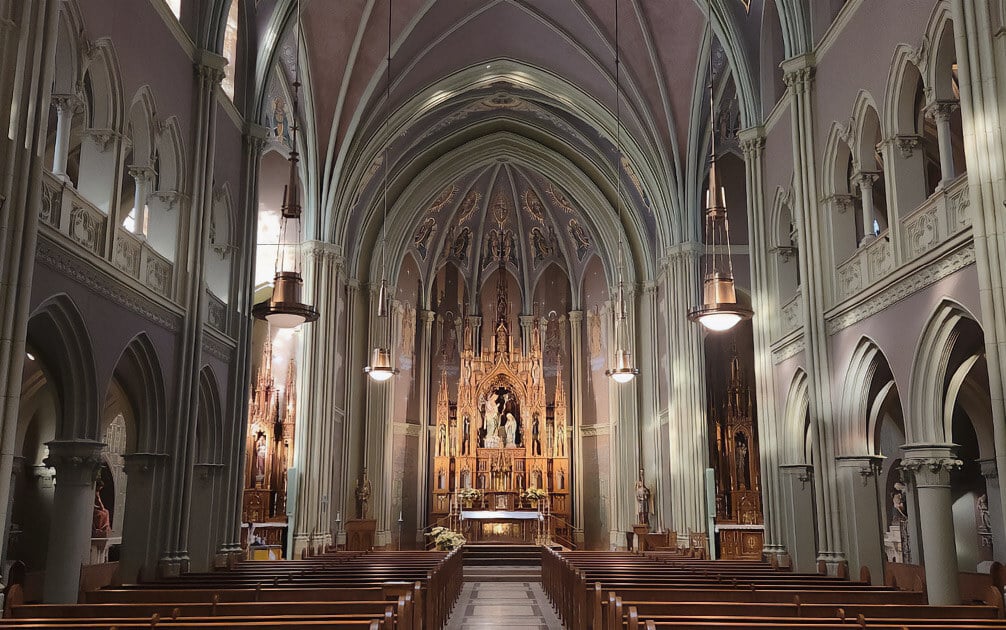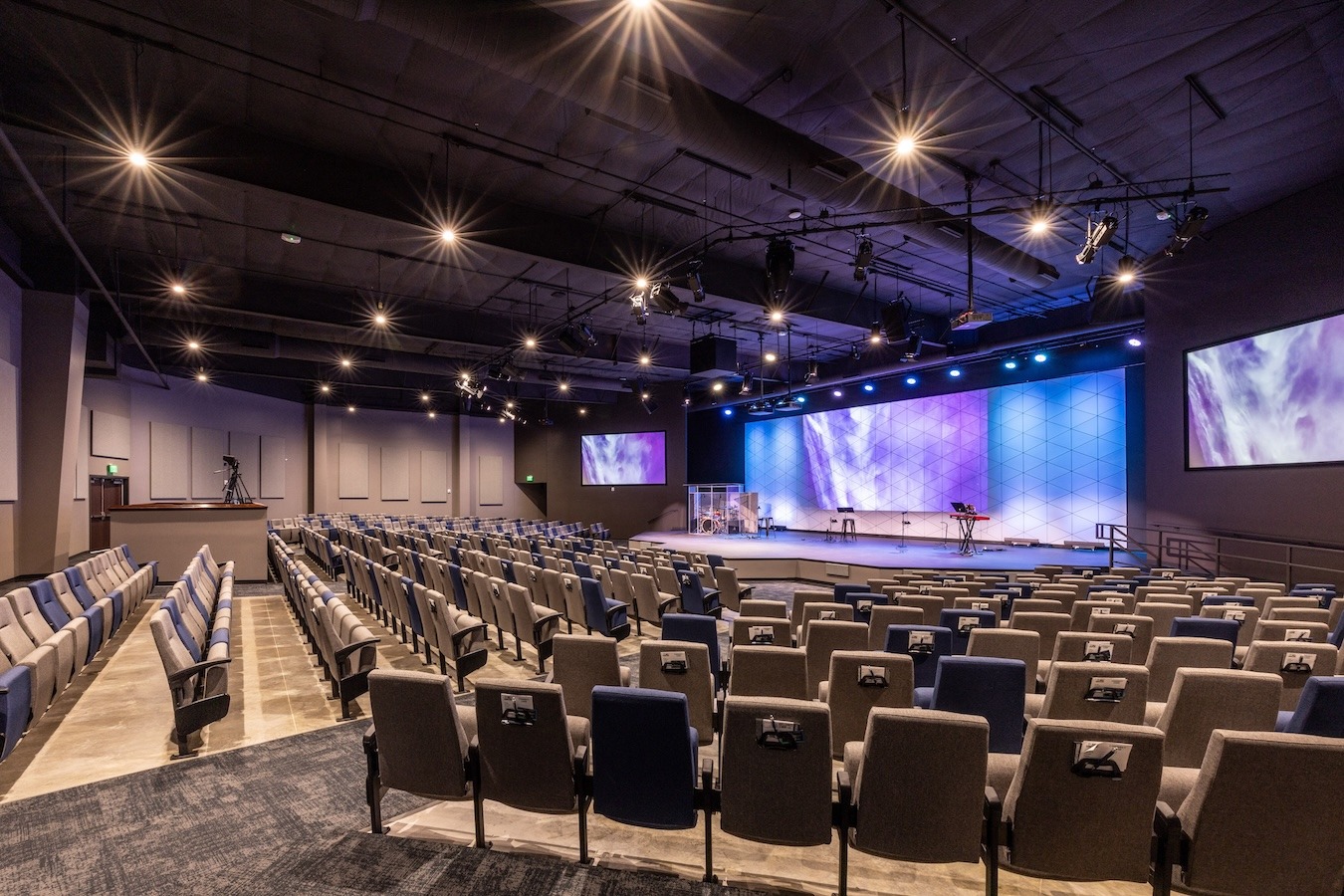The Scientist Behind The Art
Ever sat in a theater and felt the bass pulse through the floor or heard a voice carry so effortlessly that it seemed to hang in the air, waiting for...
Every space tells a story. And every story has a sound.
We’ve been in more church sanctuaries, gyms, warehouses, and multi-purpose spaces than we can count. But when we begin a project, we don’t start with spec sheets. We don’t reach for gear.
The first thing we do when we walk into a new venue? We listen.
Before we talk coverage maps, DSP settings, or how many boxes hang from the ceiling—we pay attention to the story your room is already telling. Because before we can help you shape what comes out of your system, we need to understand what’s happening in your space.
We Listen With Our Ears, Eyes, and Instincts
Just last week, I visited a prospective client in Fayetteville, NC. I’d heard they had solid gear already. But the first thing that caught my eye walking into their 2,300-seat auditorium— tucked inside a metal-framed structure—was the acoustic treatment.
“Oh, they actually care about the important things. We’re in the right place,” I thought.
After a quick look around, I clapped my hands to study what the acoustic treatment was doing in the room.
The room’s original reverb decay time used to be over 3.5 seconds. Now? It was down to 0.5. That’s intentional. That tells a story of stewardship and preparation—of a church serious about audio clarity. They’re even considering a full 360 Soundscape install. And with that acoustic canvas, it could thrive.
.png?width=897&height=498&name=Screenshot%202025-06-16%20at%2010.41.27%20AM%20(1).png)
Big Rooms Tell Big Stories
After a few minutes of walking and listening to the room, I could see where the coverage problems were showing up. Not from the brand of the boxes, but from how the system was deployed.
The tech director shared how they used their room, and specifically, their music and worship style. He explained they have a modern worship style (think Elevation, Bethel) with a gospel vibe.
A big room, full of big energy, anchored by a big Meyer line array from 2007.
Their current challenges and pain points were no surprise. But because I’d taken time to listen first, the solutions came into focus much faster.
The Pastor’s Green Room Told a Story, Too
Once we wrapped up in the large venue, I stepped back into the pastor’s green room. While I noticed a rack of gear tucked in a closet, what really stood out was the barbershop chair in the center of the room.
“He always wants to look sharp and TV-ready,” the staff shared with me.
To me, that spoke volumes about their desired approach. This was a church that cared deeply about how it looked and sounded. Their attention to image wasn’t just surface- level—it was part of how they executed excellence. That insight helped shape our entire approach to the project with every detail aligning with that vision.
.png?width=866&height=481&name=Screenshot%202025-06-16%20at%2010.41.22%20AM%20(1).png)
Every Campus Has a Personality
I recently spent a day visiting four campuses with a client around Columbus, OH.
Each of the campuses were largely similar with the same gear, same worship style, and same flow.
But then I walked into the location they called “The Chapel.”
The moment I stepped in, I knew something was different. It had stained glass. A more traditional feel. And sure enough, the tech director explained: “This campus is acoustic worship only. Quieter. Older congregation. It’s how we ensure everyone hears the Gospel the way they need to.”
The same gear, but a different use that created a different experience.
What Else Do We Notice? More Than You Might Think.
We always look deeper into a venue before we ever suggest a solution:
Speaker Placement: We immediately look at where loudspeakers are mounted and how wide (or narrow) they’re deployed. It explains 90% of what you may describe as “coverage issues.”
The Lobby Vibe: modern, vibey, with coffee full of flavor? The music will likely be similar. Older carpet, chaotic traffic, kids everywhere, and smells like a funeral home? That’s a good indication of what the audio experience will be like inside.
How We Got Connected: Was it a tech director, a board member, an investor, a senior leader, or someone from the congregation? That often reveals what kind of experience the venue wants to provide.
Stage and Cable Cleanliness: Tidy stage? That’s a team that values excellence. Messy spaghetti of cables? That might tell us where we need to start.
Even the Smell of the Space: Ok, seriously, this blog is almost over but hear me out on this one. When a church smells good, it usually means they care about the little things. And that means they’ll care about all the details of a good experience, too.

It’s Never Just About the Gear
We often say:"Great audio-visual doesn’t distract - it disappears."
Our job isn’t to impress people with the science or technology. It’s to help churches and performance spaces remove friction so their message comes through with power and consistency. That’s communicating with clarity.
That’s why we start by listening.
Because when we understand your space, your people, and your story—we can help you sound like who you really are.
- Cory Hall
If you're ready to ensure your message is felt, and not just heard, click here to connect with us today.

Ever sat in a theater and felt the bass pulse through the floor or heard a voice carry so effortlessly that it seemed to hang in the air, waiting for...

Blueprinting Sound For Worship An architect designs a building to fit its function—we do the same with sound. What does that mean? It means we don’t...

Welcome to the Weird World of Psychoacoustics We talk about sound like it’s simple—turn it up, turn it down. But the truth is, loudness is less about...
.png)